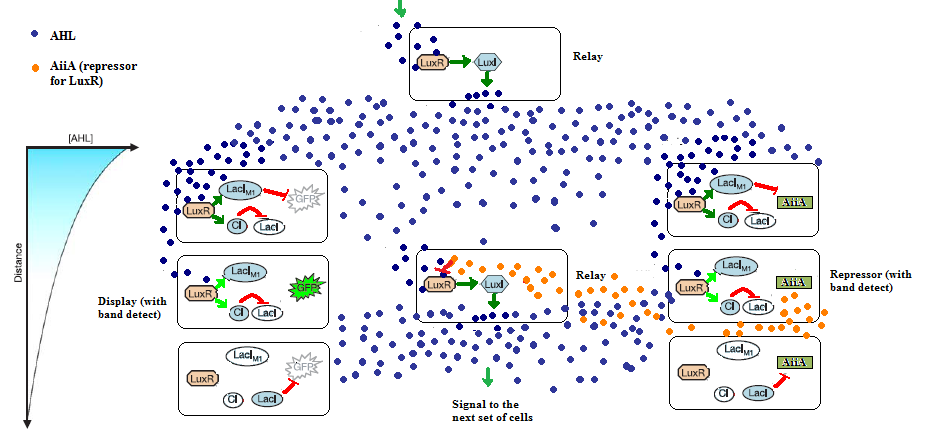Team:Uppsala-SwedenProject
From 2010.igem.org
| Line 483: | Line 483: | ||
== Previous Work == | == Previous Work == | ||
| - | Being an engineering competition iGEM promotes building on previous projects.The Cambridge 2007 and 2009 teams built upon each other to produce the Sensitivity Tuner using phage activators and promoters.These Sensitivity Tuner's can detect different levels of a input signal and generate a corresponding output. You can find details of how the teams built and characterised their parts in the [https://2009.igem.org/ Team:Cambridge/Project/Amplification last years website]. | + | Being an engineering competition iGEM promotes building on previous projects.The Cambridge 2007 and 2009 teams built upon each other to produce the Sensitivity Tuner using phage activators and promoters.These Sensitivity Tuner's can detect different levels of a input signal and generate a corresponding output. You can find details of how the teams built and characterised their parts in the [https://2009.igem.org/Team:Cambridge/Project/Amplification last years website]. |
== Proof Of Concept and Characterisation: == | == Proof Of Concept and Characterisation: == | ||
Revision as of 08:44, 21 July 2010



|
Project Description:Our project for iGEM 2010 involves building a biological rate detection sensor and demonstrating its usefulness in building a bio-clock and color display unit. The rate detection mechanism makes use of a pair of of promoters with different efficiencies to detect the quantitative value of the input signal. Figure 1:Schematic showing quorum sensing behaviour and responses which relate to band detect. Adapted from Basu S et.al, 2005. Band Detect:Previous WorkBeing an engineering competition iGEM promotes building on previous projects.The Cambridge 2007 and 2009 teams built upon each other to produce the Sensitivity Tuner using phage activators and promoters.These Sensitivity Tuner's can detect different levels of a input signal and generate a corresponding output. You can find details of how the teams built and characterised their parts in the last years website. Proof Of Concept and Characterisation:Under Construction References:1.Basu S, Gerchman Y, Collins C.H, Arnold F.H, Weiss R, A synthetic multicellular system for programmed pattern formation, 2005, Nature, Vol 434, 1130-1134. 2.Danino T, Mondragón-Palomino O, Tsimring L, Hasty J, A synchronized quorum of genetic clocks, 2010, Nature, Vol 463(7279): 301-2. |
 "
"
